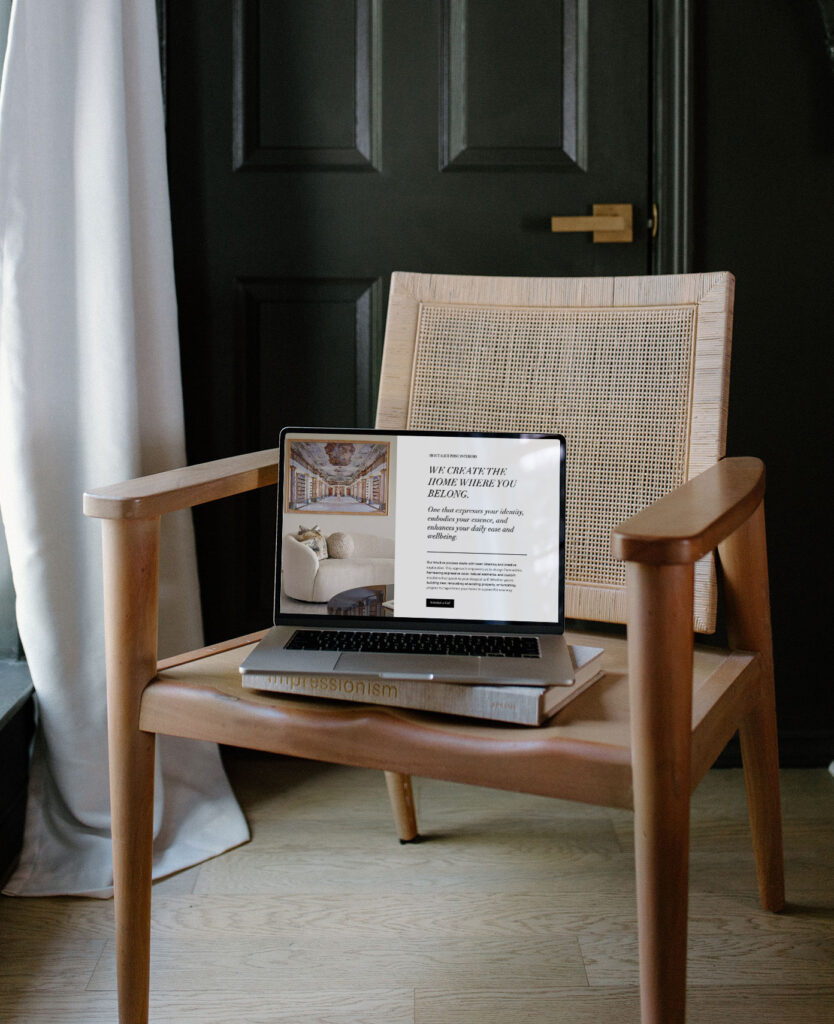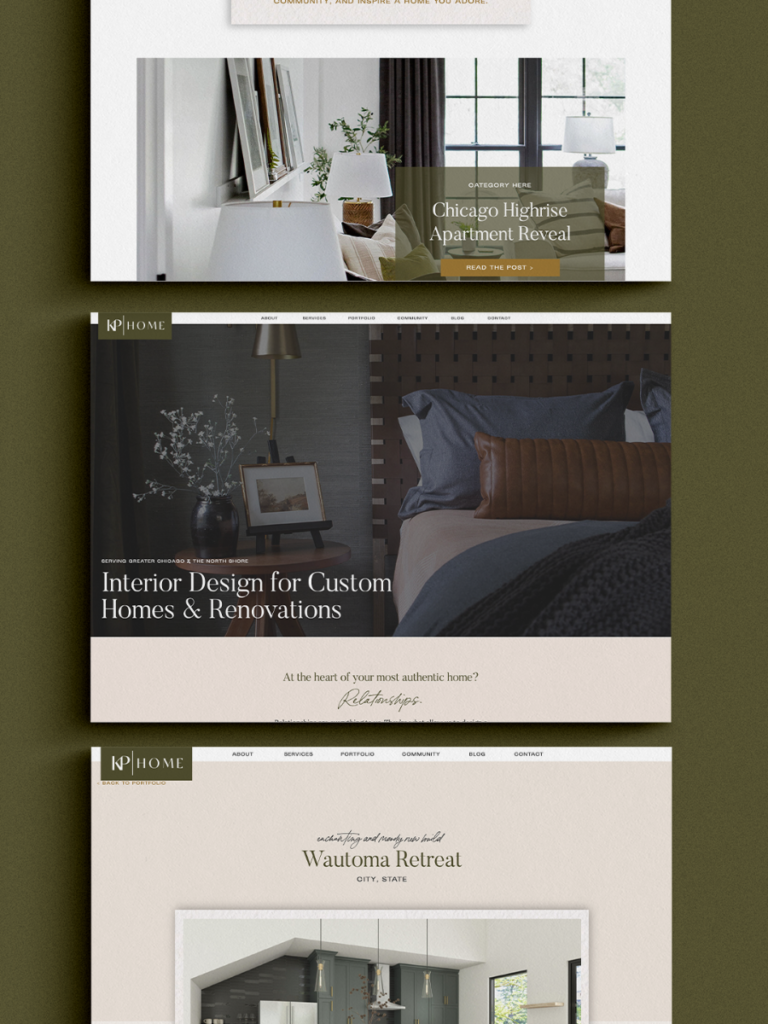Website Copy Series: Crafting Standout Portfolio Descriptions

When we write website copy for our interior designer clients, this question always arises: should we include portfolio summaries? In our opinion, we will always say “YES” to giving each project its own narrative. Even a brief write-up can:
- Spark a connection with ideal clients by sharing details they will love
- Reveal what can’t be seen, such as details around heirlooms, type of stone, etc.
- Highlight your role in executing the design & build trust in your expertise
- Improve your website’s SEO with copy related to your field
First, Think about Your Portfolio Summaries’ Layout
Before we start writing, we have to ask ourselves what kind of space we have on the website. Think about it like space planning before selecting furnishings. Same concept. Here are three options:
Option 1. A brief paragraph or two at the top of the project
Pros: Great opportunity to tell a story, looks aesthetically pleasing
Cons: Requires brevity, which can omit a lot of great detail
Examples from our Work: Alice Pirsu Interiors, Studio Vocaire
Option 2. Short sentences spread throughout the project’s photo gallery
Pros: Great opportunity to tell a story, ability to share more details, editorial vibe
Cons: You have to be strategic about pairing text with photos, which takes more work
Examples from our Work: CWG Design
3. Brief intro + bullet points for easy reading
Pros: Brief and easily skimmable for your clients, can highlight important details
Cons: Has to be implemented well by your website designer or can look messy
Examples from our Work: The Space Within, KP Home

How to Write Portfolio Descriptions: Creating a Compelling Narrative
Once you know the style you’re aiming for, now it’s time to think about the words themselves. Regardless of which presentation you choose, your portfolio descriptions need to be short and impactful. (They’re not blog posts.) This means sharing the details that will truly capture the transformation you achieved for your clients.
01 / Establish the Main Characters, Your Clients
Every story has main characters, and in this case, it’s your clients. Yes, many clients appreciate anonymity and discretion, but there are plenty of vague yet identifying terms you can use to be relatable at the same time.
For example, you could call the clients “a family with three kids,” “an entrepreneurial couple,” “empty-nesters with two Goldens,” etc. These details create an image in your readers’ minds, and chances are, they will have something in common. That’s what draws them in.
02 / Share Brief Lifestyle Details
Next, it’s important to lightly season the description with lifestyle details. For example, maybe your clients love to travel, maybe they have grown kids who return home often, or maybe they only use the residence as a summer house.
As you know from designing the home for them, these details are not trivial. They’re what directed teh design. When writing portfolio descriptions (aka, marketing) these details create a connection with people who share that lifestyle. Plus, it helps prospective clients imagine the way your finished design is used in real life.
03 / Establish the Objectives & Challenges
There are two ways you can go about sharing the clients’ objectives and challenges, if you choose to do so. (Not all of our clients do.) First, you can say it outright. For example, “They contracted us for a full-home redesign that would make their interiors more conducive to modern-day living.”
Or, you can integrate those goals into your commentary when sharing the final design choices you made. For example, “We reconfigured the kitchen’s footprint to create better flow, expand storage space, and inspire joyful family gatherings.” The outcome is presented as a clear solution.

04 / Show them the Design Details
Lastly, the details. Let’s be honest — there are thousands of them in one room alone. So, which do you share? To answer that, think about what your ideal client cares about most. Is it functionality? Brand names? High-quality materials? Exclusivity?
The details you share should speak to these things, especially if those details are difficult for non-designers to see within photos. For example: marble countertops, art found during the client’s travels in [insert location], a reupholstered heirloom chair, etc.
(P.S. We’d also like to point out that these are the details AI will never be able to discern on its own! It can’t tell you which details to include or know whether a chaise belonged to the client’s grandmother. Only humans can do that.)
05 / Give it a Satisfying Conclusion
We sometimes like to end each portfolio description with a short, punchy statement that brings the story full circle, showing that, yes, these protagonists did achieve what they set out to achieve when they hired you.
It can be short, such as: “Now these spaces are ready for years of family memories.” But, of course, tailored to the clients and to what your ideal clients care about. You can also choose not to include this, since it may be apparent from the photos.
Looking for more examples?
Take a browse through our portfolio to see other examples of project summaries we’ve created for clients. Or, hire us and we’ll treat you to a full-service experience — the copywriting version. 😉
Xoxo,
Jaquilyn
WORKBOOKS & DOWNLOADS
A-to-Z LIST OF LUXURY WORDS
GUIDE TO BRAND MESSAGING
START BLOGGING FOR SEO
Printable Workbook
Our Go-To Lexicon!
Guide + Checklist